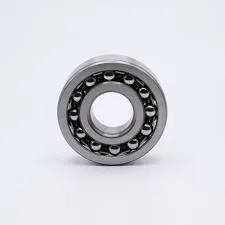
ਦਸੰ. . 10, 2024 00:47 Back to list
Comparison of Angular Contact and Deep Groove Ball Bearings for Optimal Performance
Difference Between Angular Contact and Deep Groove Ball Bearings
When it comes to rolling element bearings, engineers and technicians often confront a plethora of choices to meet specific application requirements. Among these, angular contact ball bearings and deep groove ball bearings are two of the most widely used. While both serve the fundamental purpose of supporting rotating elements in machinery, they exhibit distinct characteristics that render them more suitable for specific applications. This article delves into the differences between these two types of bearings to aid in the selection process.
Design and Construction
Angular contact ball bearings are designed to support both radial and axial loads. They feature a contact angle, which is the angle between the line connecting the point of contact between the ball and raceway and a perpendicular line to the raceway. This angle allows angular contact bearings to handle higher axial loads in one direction, making them ideal for applications subject to combined loads.
In contrast, deep groove ball bearings are characterized by their simple design. They have a large continuous groove for the balls, allowing them to manage both radial and moderate axial loads. Deep groove ball bearings can handle loads from multiple directions, but their capacity for axial load is not as high as that of angular contact bearings. The design of deep groove bearings enables them to operate more quietly and with lower friction, which is often beneficial for applications requiring high-speed rotation.
Load Capacity
One of the most significant differences between the two types of bearings is their load capacity. Angular contact ball bearings can accommodate higher axial loads due to the specific design of their contact angle. The balls in these bearings are positioned in such a way that they bear more significant loads, especially under conditions where one direction incurs more pressure. This makes angular contact bearings ideal for applications such as spindle bearings in machine tools, where axial load handling is critical.
On the other hand, deep groove ball bearings are designed for moderate axial loads. While they can bear radial loads efficiently, their in-line contact design means they are not apt for applications demanding heavy axial forces. This limitation makes deep groove bearings more suitable for applications like electric motors, automotive applications, and general-purpose machinery, where loads are mostly radial.
difference between angular contact and deep groove ball bearing

Speed Capability
Another critical difference lies in speed capability. Deep groove ball bearings are often the preferred choice for high-speed applications. Their design allows for lower friction, enabling smoother rotation at higher speeds. This makes them suitable for applications such as fan motors or various types of pumps.
Conversely, angular contact ball bearings are typically used in lower-speed applications. Due to their design to handle axial loads, they often generate more heat at higher speeds, which can lead to premature failure if not adequately managed. However, if a specific application necessitates both axial support and relatively high speed, specially designed angular contact bearings are available.
Alignment and Assembly
The assembly and alignment requirements also differ significantly between these bearings. Angular contact ball bearings usually require precise alignment during installation, as any misalignment can adversely affect performance and lifespan. They may also need additional support, such as rings or housings, to maintain their orientation under load.
Deep groove ball bearings are more forgiving in terms of alignment and can tolerate slight misalignments, making them easier to install. This attribute is particularly beneficial in scenarios involving simpler machinery or where space constraints limit installation precision.
Conclusion
In summary, the primary differences between angular contact and deep groove ball bearings lie in their design, load capacity, speed capability, and installation requirements. Angular contact ball bearings are ideal for applications dealing with significant axial loads and where fine alignment is achievable, whereas deep groove ball bearings excel in high-speed and moderate load situations, offering ease of installation and reliable performance. Understanding these distinctions is crucial for engineers and technicians to make informed decisions that enhance machine performance and longevity. Whether selecting bearings for competitive machinery or high-speed equipment, knowing the right type can make all the difference.
Latest news
-
Common Failures in Thrust Ball Bearings and Solutions
NewsAug.22,2025
-
How Tapered Roller Bearings Can Take Shock Loads
NewsAug.22,2025
-
Angular Bearings in High-Precision Spindles
NewsAug.22,2025
-
The Impact of Misalignment on Cylindrical Roller Bearing Performance
NewsAug.22,2025
-
The Role of Cage Design in Deep Groove Ball Bearing Durability
NewsAug.22,2025
-
The Impact of Material Quality on Machinery Bearings’ Lifespan
NewsAug.22,2025
